
Most watercolour painters who favour a looser technique also seek to produce a final painting that is very much simpler than the original subject. By “simpler”, I mean a less cluttered and detailed appearance – something that is often quite difficult to achieve in practice.
Creating a simpler composition is not simply a case of leaving things out (although this may well be part of it). Instead, it is the much more nebulous idea of painting a chosen subject so that it appears to be very quickly and economically executed, while still suggesting the detail that is effectively no longer there.
As I will show you in this article, one sure way to help this process along is to use a pencil sketch of the original subject, drawn in situ, as the main resource for the painting.
On the rare occasions when I travel to any of the London airports, I always try to get to the city for a couple of hours painting and I usually head for the River Thames where I can be sure of finding something interesting.
On my last visit I enjoyed a morning’s painting around St Saviour’s Dock and after lunch I crossed the river, ending up outside the Tower of London. It was quite crowded, a light rain was starting to fall, I needed to get back to the airport fairly soon, and the subject didn’t immediately inspire so this provided me with four good excuses not to set up my easel again.
This story is from the April 2020 edition of Artists & Illustrators.
Start your 7-day Magzter GOLD free trial to access thousands of curated premium stories, and 9,000+ magazines and newspapers.
Already a subscriber ? Sign In
This story is from the April 2020 edition of Artists & Illustrators.
Start your 7-day Magzter GOLD free trial to access thousands of curated premium stories, and 9,000+ magazines and newspapers.
Already a subscriber? Sign In

Still life IN 3 HOURS
Former BP Portrait Award runner-up FELICIA FORTE guides you through a simple, structured approach to painting alla prima that tackles dark, average and light colours in turn
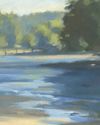
Movement in composition
Through an analysis of three masterworks, landscape painter and noted author MITCHELL ALBALA shows how you can animate landscape composition with movement
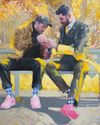
Shane Berkery
The Irish-Japanese artist talks to REBECCA BRADBURY about the innovative concepts and original colour combinations he brings to his figurative oil paintings from his Dublin garden studio

The Working Artist
Something old, something new... Our columnist LAURA BOSWELL has expert advice for balancing fresh ideas with completing half-finished work
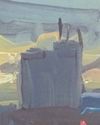
Washes AND GLAZES
Art Academy’s ROB PEPPER introduces an in-depth guide to incorporating various techniques into your next masterpiece. Artwork by STAN MILLER, CHRIS ROBINSON and MICHELE ILLING
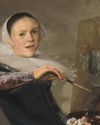
Hands
LAURA SMITH continues her new four-part series, which encourages you to draw elements of old master paintings, and this month’s focus is on capturing hands

Vincent van Gogh
To celebrate The Courtauld’s forthcoming landmark display of the troubled Dutch master’s self-portraits, STEVE PILL looks at the stories behind 10 of the most dramatic works on display
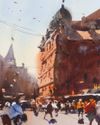
BRING THE drama
Join international watercolour maestro ALVARO CASTAGNET in London’s West End to paint a dramatic street scene
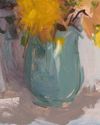
Serena Rowe
The Scottish painter tells STEVE PILL why time is precious, why emotional responses to colour are useful, and how she finds focus every day with the help of her studio wall

Bill Jacklin
Chatting over Zoom as he recovers from appendicitis, the Royal Academician tells STEVE PILL about classic scrapes in New York and his recent experiments with illustration